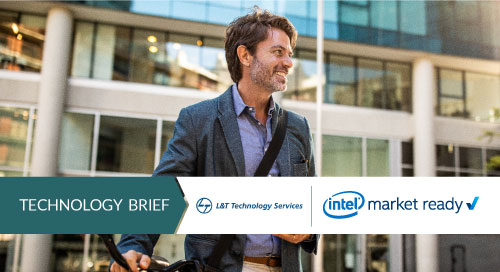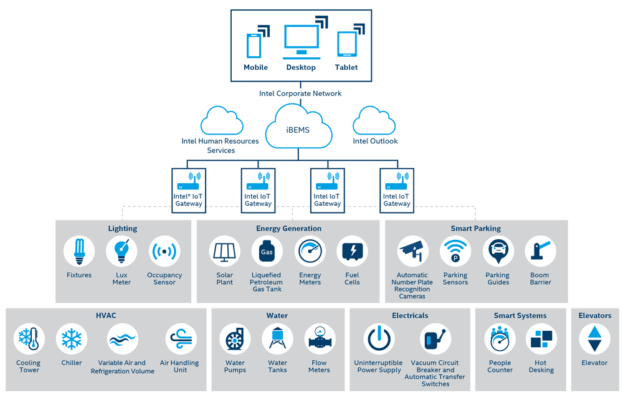Smart Buildings Get Personal

More than ever, our building environments must serve the needs of every person who works, lives, and plays there. This means protecting people’s safety and health is a top priority. As a result, deploying smart building technology is no longer an option but a necessity.
The building of the future isn’t just about connecting an array of systems, from HVACs and digital signage to conference rooms and parking garages. Instead, it uses the power of new technologies to address one fundamental question: How does the building benefit all the people who use it?
“When we’re able to connect all these different systems, we can acknowledge the fact that every person who enters a building has a unique purpose for being there, and we can give each of them an intelligent, personalized, and safe experience,” said Ashish Khushu, CTO at ER&D Services provider L&T Technology Services (LTTS).
Visiting customers could benefit from digital signs to help them navigate to a conference room. An engineer might like the freedom to work late into the night. An outside vendor would have a temporary badge that allows access only to unrestricted locations. And, of course, an operations manager aims to control all the systems required to provide these experiences in a way that’s both efficient and cost-effective.
Buildings intelligent enough to address these various needs are becoming more of a reality, thanks to edge compute, AI, and advanced sensor technologies. And they’re proving to not only increase employee safety and productivity—but reduce energy and operational costs, too.
Energy consumption and its costs are reduced, helping companies meet carbon reduction initiatives and regulations.
@LnTTechservices
The Smart Building of the Future
“Traditional buildings consume large amounts of resources at great cost,” said Khushu. “In part that’s because the facilities manager is tasked with keeping the building fully functional all the time—even on evenings and weekends when only a handful of people might need access.”
For example, every system on a floor built to accommodate 200 people could be powered for only one or two. And the expense associated with this kind of off-peak usage is significant. According to Khushu, it can account for up to 35 percent of the operational monthly budget.
Smart building systems are designed to help operators accurately track and manage usage so that they can find ways to cut costs without compromising this level of service. But LTTS built the Intelligent Building Experience Management System (iBEMS) to do more. The platform connects data from different building systems—lighting, HVAC, smart elevators, and more—to optimize resource consumption by linking it to the number of people who are working at any particular location and time (Figure 1).

For example, with a flexible-work scheduling system connected to iBEMS, weekend workers might have access to only one instead of eight operational floors. But even with their choice of floors constrained, an extensive network of interconnected sensors would ensure that employees’ comfort remains a priority. Perhaps the A/C is set to come up to a temperature preset for the people using the space when they enter. Or a choice parking spot can be prebooked by an expectant mother (and automatically canceled if she chooses to work from home).
The granular view iBEMS provides allows facilities and corporate real estate managers to maximize usage of space down to the conference room, elevator, or desk. As a result, energy consumption and its costs are reduced, helping companies meet carbon reduction initiatives and regulations.
Intelligent Campus in Action
L&T Technology Services partnered with Intel® to design the “building of the future” to provide enhanced user experiences while reducing resource usage at Intel’s Israel campus. The first step was to catalog user stories by dividing stakeholders into categories and asking about the different kinds of experiences each would like to have.
Khushu said that for an iBEMS implementation to succeed, this kind of planning—and a defined vision during the design phase—are crucial. “Storyboarding the experiences that the building should provide takes time and requires executive sponsorship,” explained Khushu. “But once intelligent, personalized experiences are at the center of the design, managing the tools and technology becomes much easier.”
To connect building assets, the two companies deployed a network of Intel IoT gateways and roughly 2,000 sensors, the placement of which had to be carefully planned before the building was even built. “The software is critical,” noted Khushu. “But the software is only as good as the data, and the data depend on the sensors.”
Scalability (and Safety) Are Everything
Of course, reducing operating expenses and improving occupant experiences aren’t the only challenges shaping corporations’ facilities decisions. They must also confront the fact that people’s preferences and needs are always evolving, and what was required six months ago might have changed considerably since.
But LTTS can help. Unlike building systems created around proprietary technologies that are difficult to upgrade, its software-based architecture is flexible. “So when companies need new features and functionalities, we can add them very easily,” said Khushu.
And with safety a growing concern in today’s uncertain environment, scalability is especially important. Khushu says LTTS is already working on combining facial recognition technology with thermal sensors that can detect body temperature. Soon, every person walking into an iBEMS building will be automatically checked for illness, helping to keep businesses and their employees healthy and productive.